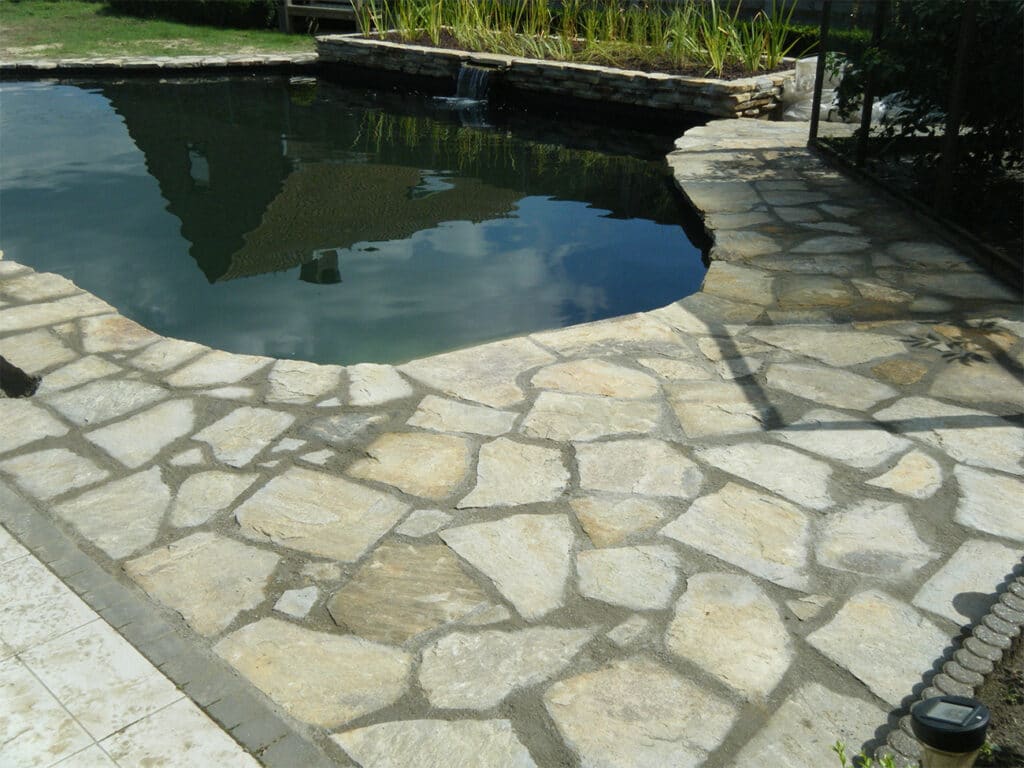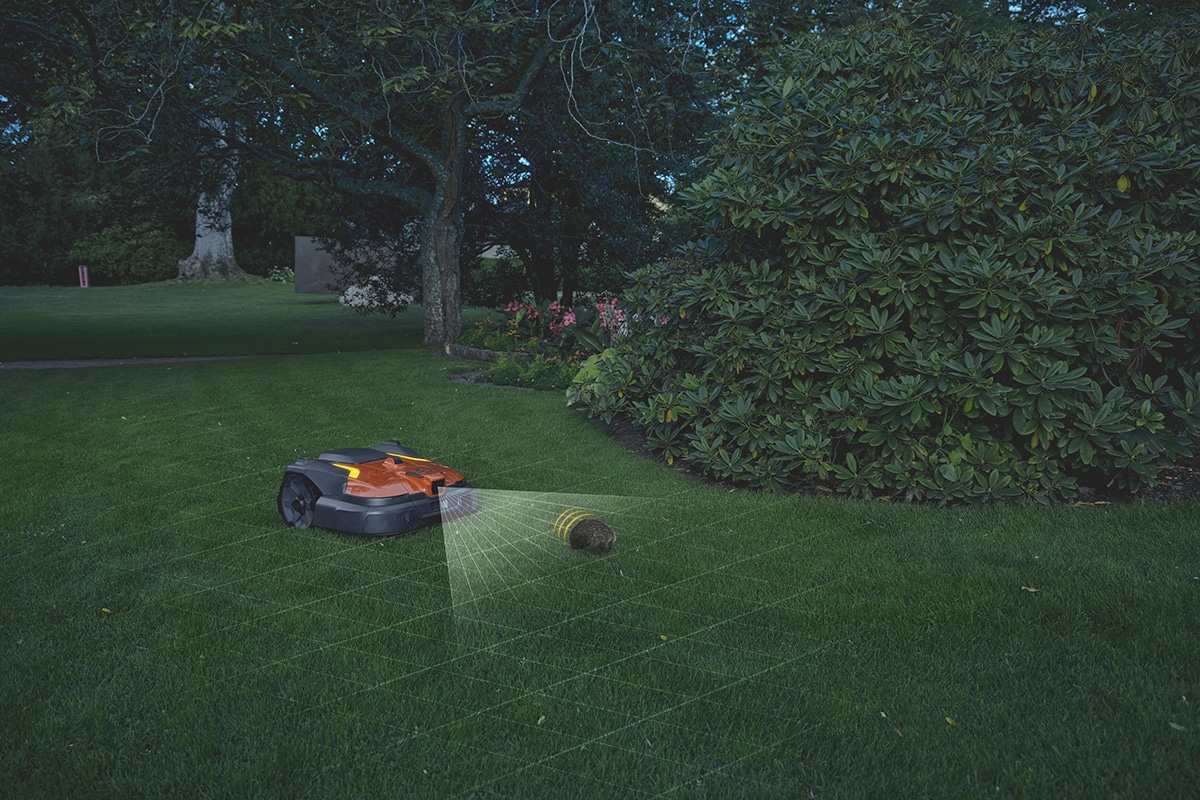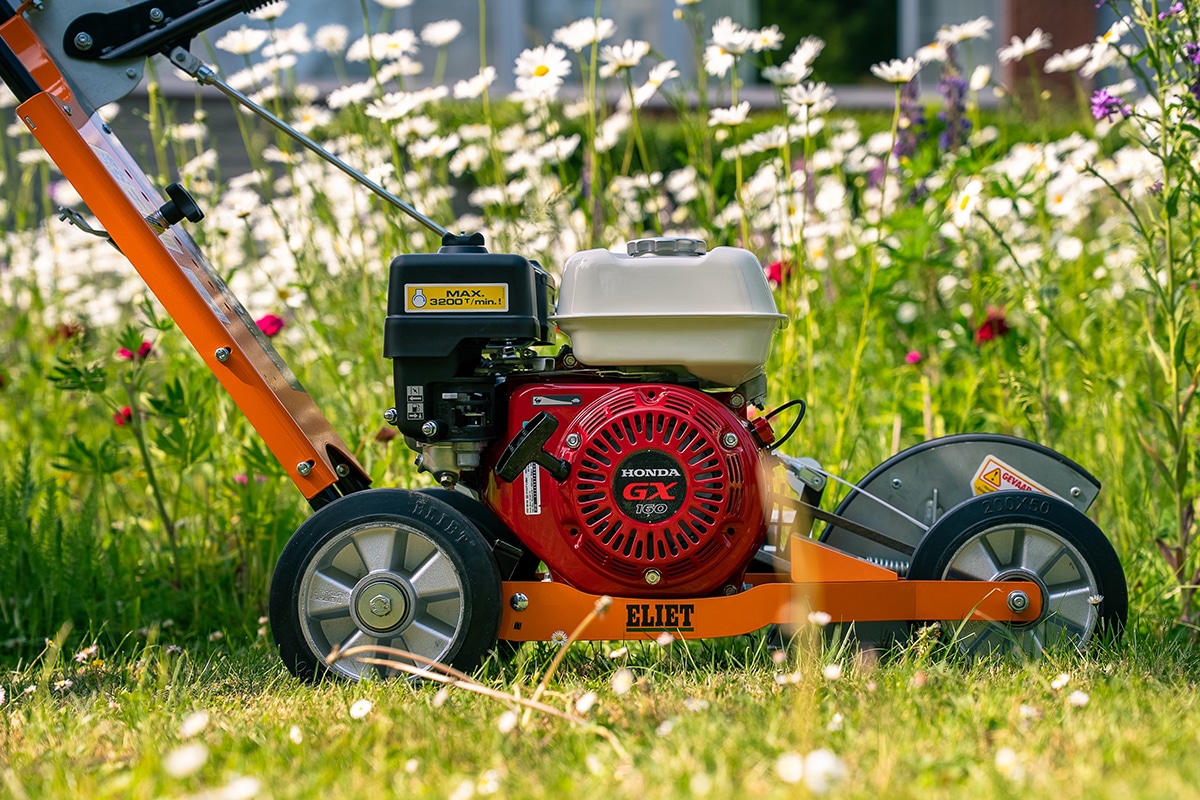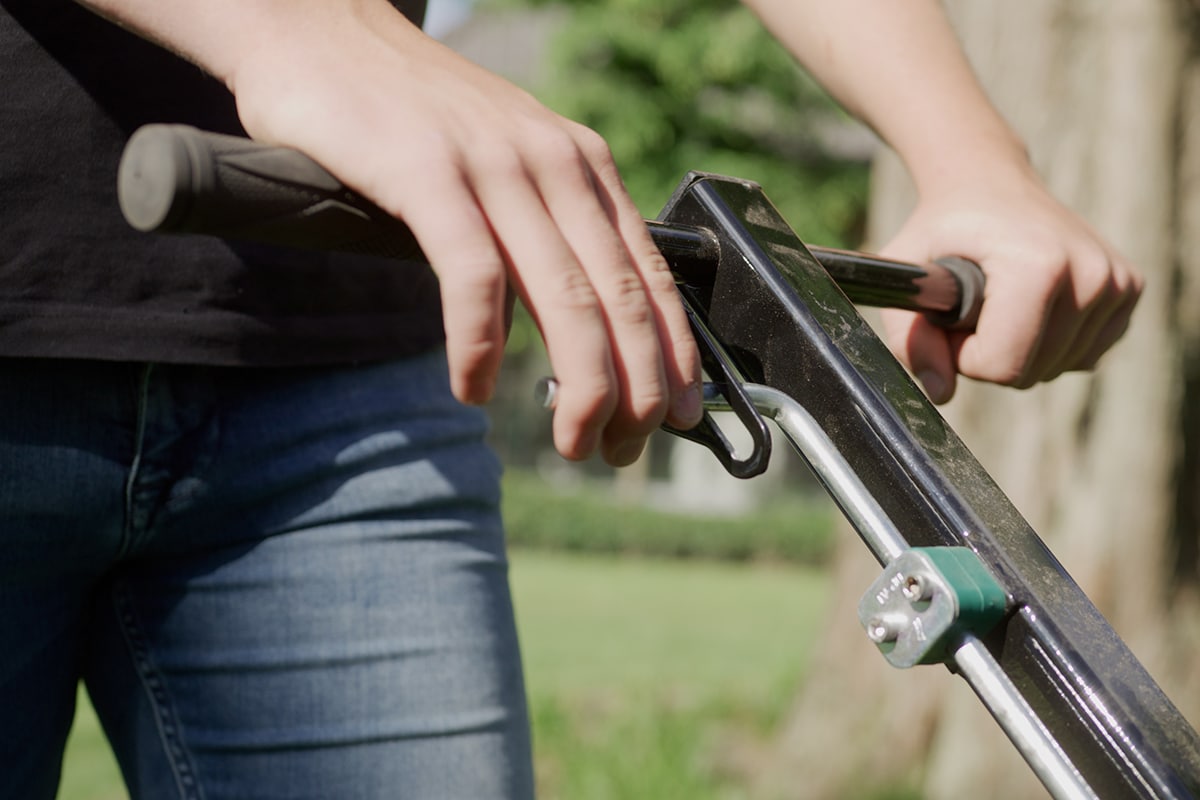
Playful paths and terraces with flagstones
Just think of the many flower meadows, prairie gardens and small, Japanese-inspired oases. The material of choice to match patio and walkway to such a natural concept as well? Naturally broken and whimsical flagstones.
Flagstones are naturally broken stones. They are often layered stones such as slate, but flagstones are also made from compressive rocks such as kavalas and bluestone. Unlike classic tiles, flagstones have no fixed shape or size. Each stone is different. It is precisely that unique and whimsical aspect that appeals so much, not least in wild zones, prairie gardens and wellness concepts, but just as much in the country garden, for example. For the placer, however, the enormous diversity among flagstones can already mean some extra challenge.

Know what you are buying
"The challenge often begins at the time of purchase," says Els Meynen of garden materials retailer E.L.S. Garden. "After all, flagstones are not simply sold by surface area, but rather by weight. When we speak of certain calibers, moreover, we are not talking about the average dimensions of the stones, but rather the average thickness. In other words, a kavalas flagstone 30/50 will be between 30 and 50 millimeters thick, but in terms of size and surface area, there can still be very large differences."
To simplify the purchase of flagstones according to the area needed, they are offered at E.L.S. Garden layer by layer on pallets. "The stones are hereby fitted together as best as possible on a pallet of say one square meter. So that way you can nicely determine, depending on the joint width you want to use, how many layers you need for a particular garden project."

More difficult to estimate is the amount of grout you'll need next. "The width of the grout can fluctuate tremendously, depending on how well the different bricks fit together. For example, in one place you may have enough with a 1-inch grout; in another place you may need 8 inches of grout. That kind of thing often only becomes clear during installation, so it is quasi-impossible to calculate."
Work to the cord
Flagstones can be used either as individual stepping stones or as complete decking. "Stepping stones are often laid in gravel, possibly with a thin cement puddle underneath for stability. The surrounding space can then also be nicely filled with gravel, lava pebbles or even planting. For larger terraces or enclosed paths, one is more likely to opt for a mortar bed, although not every type of flagstone is suitable for this. Yonne flagstone, for example, is soft and semi-frost sensitive. In other words, the stone will absorb moisture from the cement, which can lead to cracking in the event of frost. This type is therefore best laid on split."

To create a nice closed surface, for example for a terrace, the stones are puzzled together as best as possible. "If there are still too big voids left between different stones, you can break off small pieces of stone at the end and match them up," he says.
Still, according to Els Meynen, fitting the flagstones together is not the biggest challenge. "It is mainly the variations in thickness that require some extra attention. You won't get there with an even mortar bed. As with cobblestones, you have to work to the string or lath. That's the only way you can get a flat surface."



